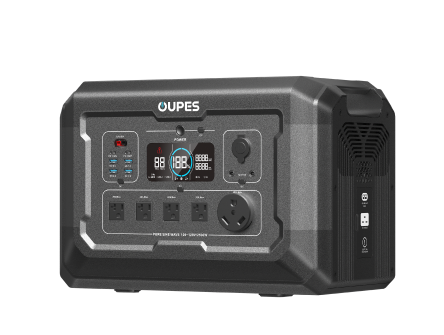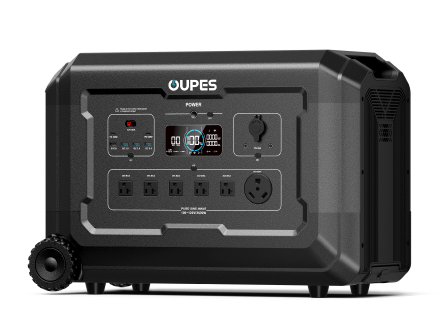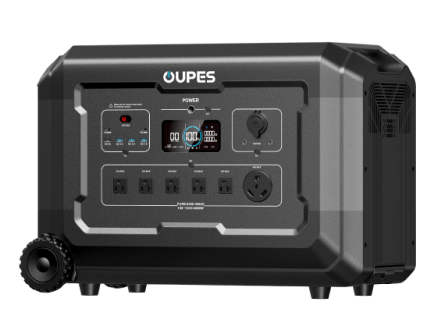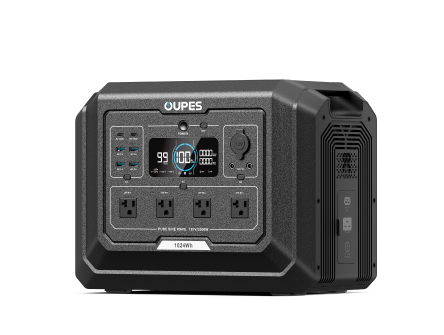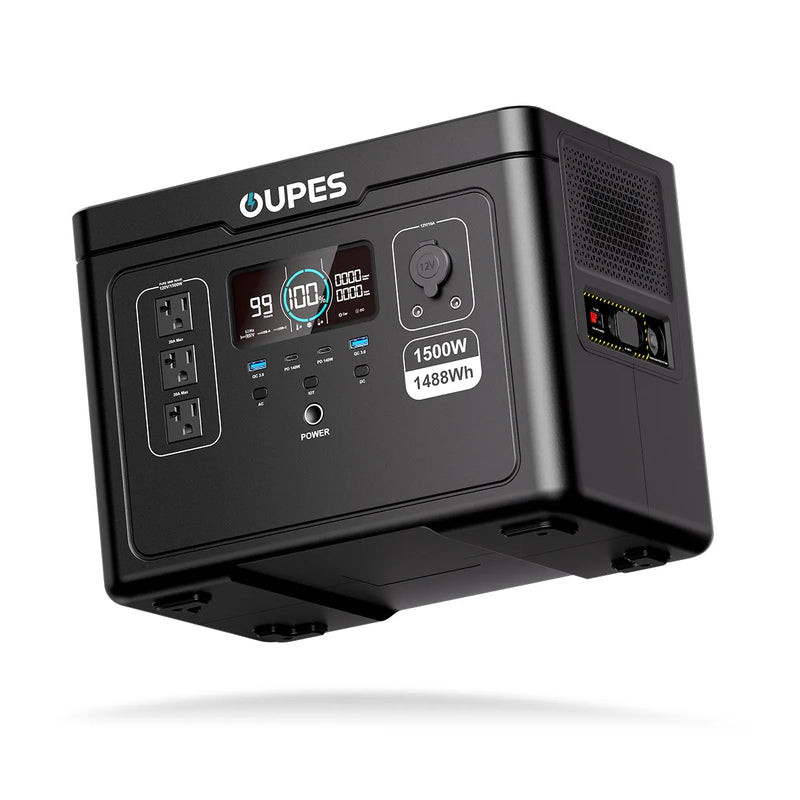
TL;DR / Key Takeaways
- A mini fridge typically uses 60–120W depending on size and efficiency.
- A portable solar generator with at least 500–1000Wh capacity is recommended.
- Pairing with solar panels ensures continuous operation, especially off-grid or during power outages.
- OUPES generators provide safe, expandable, and efficient power for mini fridges and other essentials.
Introduction
Whether you’re camping, traveling in an RV, or preparing for emergencies, keeping a mini fridge powered is a common need. Portable solar generators provide a clean, quiet, and renewable way to run essential appliances. In this guide, we’ll explore how much energy a mini fridge requires, what size solar generator you’ll need, and how to optimize the setup for reliable performance.
Understanding Mini Fridge Power Needs
Mini fridges vary in energy consumption depending on their design, insulation, and size. On average, they consume between 60 and 120 watts while running, though they may require a higher surge wattage when the compressor starts.
| Mini Fridge Size | Average Running Wattage | Daily Consumption (8 hrs) |
|---|---|---|
| 1.6–2.5 cu. ft. | 60–70 W | 480–560 Wh |
| 3–4.5 cu. ft. | 80–100 W | 640–800 Wh |
| 5–7 cu. ft. | 100–120 W | 800–960 Wh |
What Size Portable Solar Generator Do You Need?
To keep a mini fridge running for a full day, you’ll need a portable solar generator with at least 500–1000Wh of storage. A system with a 1000W inverter is typically sufficient for surge power. Choosing a higher-capacity model allows you to power multiple devices simultaneously without draining the battery too quickly.
How to Set Up the System
- Connect Solar Panels: Use foldable or fixed solar panels to recharge the generator during the day.
- Charge the Battery: Ensure the generator is fully charged before plugging in your fridge.
- Plug in the Mini Fridge: Use the AC outlet on the generator to power the fridge directly.
- Monitor Power Levels: Track battery percentage and solar input to avoid unexpected shutdowns.
Estimating Runtime with a Solar Generator
To calculate runtime, divide the generator’s capacity (Wh) by the fridge’s daily energy consumption.
| Generator Capacity | Mini Fridge (80W) | Runtime Estimate |
|---|---|---|
| 500 Wh | 640 Wh/day | ~7 hours |
| 1000 Wh | 640 Wh/day | ~15 hours |
| 1500 Wh | 640 Wh/day | ~23 hours |
Adding solar panels extends runtime by recharging the system during daylight hours, making continuous operation possible.
Benefits of Using a Portable Solar Generator
- Quiet Operation: Unlike gas generators, solar generators run silently, making them perfect for camping or home use.
- Renewable Energy: They use free solar power, reducing reliance on grid electricity.
- Safe Indoors: No fumes or fuel storage required.
- Portable and Versatile: Easy to move and can power multiple small appliances.
Why OUPES Is a Smart Choice
OUPES solar generators are designed for reliability and efficiency. With LiFePO4 batteries, fast charging, and multiple outputs, they can easily power mini fridges along with other essential appliances. Their expandable capacity options ensure long-term usability in both emergency and recreational scenarios.
FAQ
Can a solar generator run a mini fridge all day?
Yes, with at least 1000Wh capacity and solar panel recharging, continuous operation is possible.
How many solar panels are needed?
A 200W solar panel can provide enough daily energy to keep a small mini fridge running.
What battery type is best?
LiFePO4 batteries are recommended for safety, efficiency, and longer cycle life.
Do mini fridges have surge wattage?
Yes, compressors may briefly draw 2–3 times the running wattage when starting up.
Can I run other devices at the same time?
Yes, but you need to size your generator accordingly to avoid overloading.
What happens if the battery drains completely?
The fridge will shut off until the generator is recharged via solar or AC input.
Conclusion
Powering a mini fridge with a portable solar generator is entirely feasible with the right setup. By calculating your energy needs, choosing a generator with sufficient capacity, and pairing it with solar panels, you can enjoy uninterrupted cooling off-grid or during outages. OUPES offers reliable solutions that make powering essential appliances simple and efficient.

